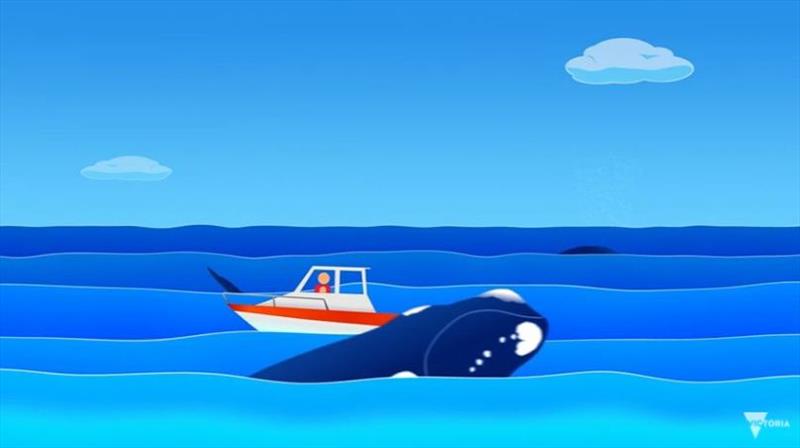
Give whales a wide berth
by Maritime Safety Victoria 4 Oct 2021 14:15 PDT

Vessel operator safety around whales © Maritime Safety Victoria
While marine wildlife is always present in Victorian waters, it's a particularly busy time of year for whales migrating and raising their young.
Southern Right Whales visit the southern coastline of Australia between April and early November every year to socialise and give birth, with the peak between June and September.
Humpback Whales are present year-round, with two peak migration seasons - April to June (northern migration), and September to November (southern migration).
Boater tips
When launching your boat, check signage and be aware of any restrictions in the area. While on the water, look in all directions and be aware of blows and splashes, which are the most obvious signs that whales are in the area.
Reduce your speed to five knots or less than 10 kph when you're within 300 m of a whale. If in the path of a whale, put your engine in neutral and allow whale to pass.
Distance rules
Vessel operators should also be aware of the following minimum distances that apply in all Victorian waters:
- Recreational boaters must remain 200 metres from whales
- High impact vessels, such as jet skis, must remain 300 metres away from whales
- Swimmers must not approach within 50 metres of a whale
- Aircraft, including drones and helicopters, are not permitted within 500 vertical metres if the aircraft is operating within a 500-metre radius of a whale.
Exclusion zone
An exclusion zone is also in place at Warrnambool's Logans Beach from 1 June to 31 October every year, prohibiting all vessels, such as boats, jet skis, kayaks and stand up paddleboards, from entering the area.
During this time, Southern Right Whales shelter at Logans Beach to give birth and nurse their young. As the only legislated Southern Right Whale nursery in south-east Australia, it's vital to give these endangered mammals space to rest without disturbance.
Check out the video Vessel operator safety around whales (DELWP YouTube) to learn signs a whale is nearby and what you can do to stay safe on the water.